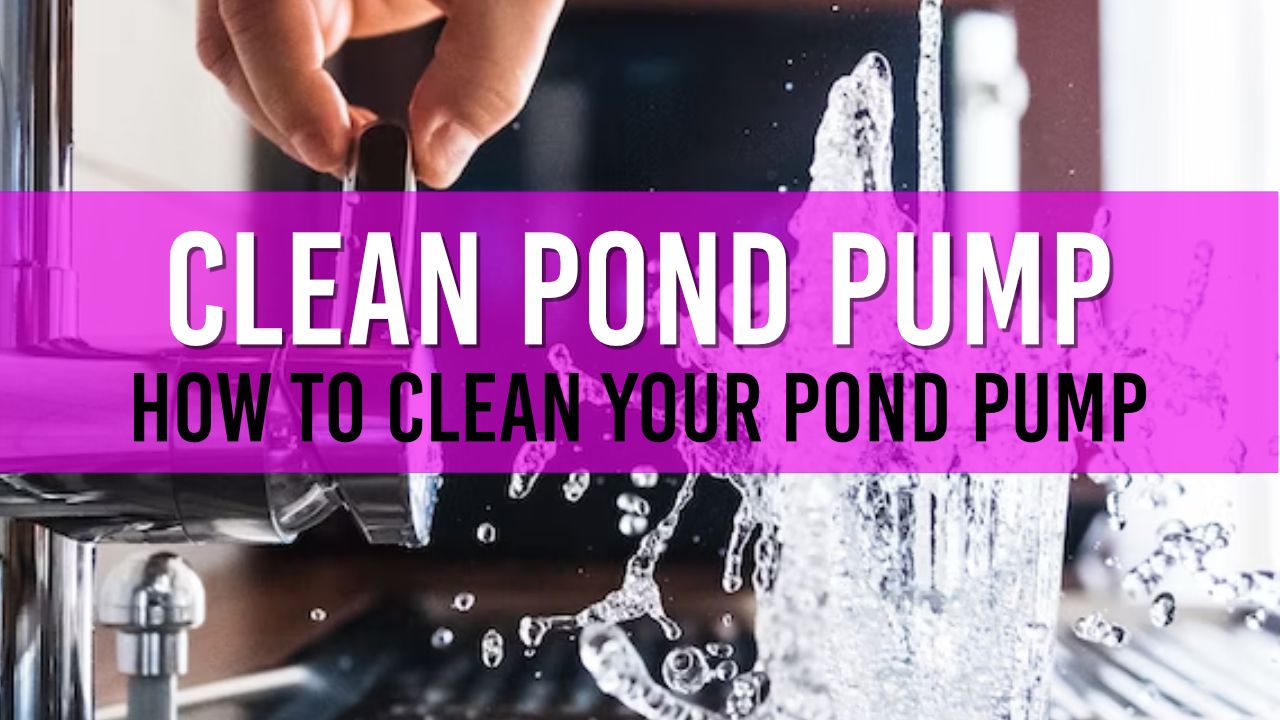Complete Guide: Cleaning Your Pond Pump for Optimal Performance
A pond pump is an essential piece of equipment for maintaining a healthy, well-balanced pond ecosystem. Regular cleaning and maintenance of your pond pump can extend its life, improve its efficiency, and ensure that it functions optimally.

Table of Contents
In this article, I'll guide you through the steps to clean your pond pump effectively, while addressing some common questions and concerns.
Why It's Important to Clean Your Pond Pump

A clean pond pump is crucial for maintaining good water quality and circulation in your pond. Over time, debris, algae, and other materials can accumulate on your pond pump, reducing its efficiency and potentially leading to blockages. Regular cleaning helps to keep your pump running smoothly and extends its life, which ultimately saves you money on running costs.
Steps to Clean Your Pond Pump
- Turn off the power: Always ensure the pump is switched off and disconnected from the power source before starting any cleaning or maintenance. This is important for your safety and to prevent any damage to the pump.
- Remove the pump from the pond: Carefully remove the pump from the pond, making sure not to damage any attached hoses, wires, or other components. If your pump is placed on bricks or another support, refer to this guide for further advice.
- Disassemble the pump: Refer to your pump's user manual for specific instructions on how to disassemble the pump for cleaning. Generally, you will need to remove the outer casing, impeller cover, and impeller.
- Clean the components: Use a soft brush or cloth to gently remove any debris, algae, or other materials from the pump components. For stubborn deposits, you can use a solution of warm water and mild detergent. Be sure to rinse thoroughly with clean water to remove any detergent residue before reassembling the pump.
- Inspect the components: While cleaning, inspect the components for signs of wear or damage. This includes checking the impeller for cracks or chips and ensuring that the pump housing and seals are in good condition. Replace any damaged components as needed.
- Reassemble the pump: Once all the components are clean and dry, carefully reassemble the pump according to the manufacturer's instructions. Be sure to tighten any screws or fasteners securely, but not too tightly, to prevent damage.
- Reinstall the pump in the pond: After reassembling the pump, place it back in the pond and reconnect any hoses, wires, or other components. Ensure that the pump is positioned securely and level, following any specific guidelines from the manufacturer or this article.
- Restore power to the pump: Finally, reconnect the power supply to the pump and turn it on to ensure it is functioning correctly. If you encounter any issues or the pump is not working as expected, consult the user manual or seek advice from a professional.
How Often Should I Clean My Pond Pump?
The frequency of cleaning your pond pump depends on factors such as the size of your pond, the amount of debris, and the type of pump you have. As a general rule, you should inspect and clean your pond pump at least once every three months.
However, during the peak pond season or if you have a particularly heavy debris load, you may need to clean the pump more frequently. Regular pond maintenance and practices such as removing leaves and managing blanket weed can help to reduce the need for frequent pump cleaning.
Troubleshooting Common Pond Pump Issues

If you notice any issues with your pond pump, such as reduced water flow, strange noises, or tripping of the electric box, it's essential to address them as soon as possible. The following are some common pond pump issues and their potential solutions:
- Reduced water flow: If you notice a reduction in water flow, first check for any blockages in the pump, hoses, or filter box. If there are no blockages, inspect the impeller for damage or wear, and replace it if necessary.
- Strange noises: Unusual noises coming from the pump could indicate a damaged impeller, trapped debris, or an issue with the pump motor. Inspect and clean the pump components as needed, and consult a professional if the issue persists.
- Tripping the electric box: If your pond pump is causing the electric box to trip, there may be an issue with the pump's wiring or a short circuit. In this case, it's best to consult a professional electrician or pond specialist for assistance.
Remember to consult your pump's user manual or seek professional advice if you're unsure about how to resolve an issue with your pond pump.
Choosing the Right Pond Pump
Selecting the right pond pump is essential for maintaining a healthy pond ecosystem. Factors to consider when choosing a pond pump include the size of your pond, the desired water flow rate, and the type of filtration system you have. To help you find the perfect pump for your pond, read this comprehensive guide.
In conclusion, cleaning your pond pump regularly is essential for maintaining a healthy pond environment and ensuring the longevity of your pump. By following the steps outlined in this article and addressing any issues promptly, you'll keep your pond pump in optimal condition and enjoy a beautiful, thriving pond.

